
The best path forward for saving Lake Accotink might to let it shrink, a Fairfax County task force has proposed.
Created by the Fairfax County Board of Supervisors in May, the 30-person group was charged with exploring alternatives to fully dredging the sediment that has accumulated in the man-made body of water or converting it to a wetland, as recommended earlier this year by county staff.
In a final report delivered to the board yesterday (Tuesday), the Task Force on the Future of Lake Accotink suggested that 20 to 40 acres of the lake could be preserved with “a program of regular maintenance dredging,” which would allow kayaking and other water recreation to continue at the popular Springfield park.
The remainder of the lake could be turned into “some combination of a managed wetland and a grassland,” the task force proposed. Originally 110 acres in size, Lake Accotink has already been reduced to 49 acres, thanks to sediment build-up from the area’s development, the report says, citing Fairfax County Park Authority project manager and senior planner Adam Wynn.
“There is no doubt that preserving a smaller lake meets significant community and social goals,” a task force subcommittee charged with analyzing alternatives to a full dredging wrote in the report. “Even a small lake would allow the maintenance of the current marina area, a community gathering place for picnics, birthday parties, and many others who enjoy the calming effects of a lake environment. And, importantly, a small lake would still preserve the beauty that so many find in a lake for generations to come.”
Frequented by over 250,000 visitors a year, Lake Accotink Park (7500 Accotink Park Road) is one of the park authority’s top attractions. It features miles of trails, a carousel, a mini golf course, a picnic area, bicycle rentals and a recently updated playground in addition to a marina, where visitors can rent canoes, kayaks and paddle boats.
However, sediment carried into the lake by Accotink Creek needs to be periodically dredged, a process undertaken in 1985 and 2008. The Board of Supervisors approved a plan in 2019 to conduct an initial $30.5 million dredging operation, followed by annual maintenance dredges that would cost an estimated $2 million per year.
But the Fairfax County Department of Public Works and Environmental Services (DPWES) and its consultant, Arcadis, reported in February that 43% more sediment would need to be removed than initially estimated, and the costs of both the initial dredgings had skyrocketed to roughly $95 million.
The first 20 years of the annual dredging program would require an additional $300 million in funding, according to the February report, which was based on data collected since 2021.
As a result, DPWES staff recommended letting the lake fill up and revisiting the park’s master plan to determine how it might be maintained in the future as a “wetland and/or floodplain forest complex” — a proposal that alarmed community members. Read More
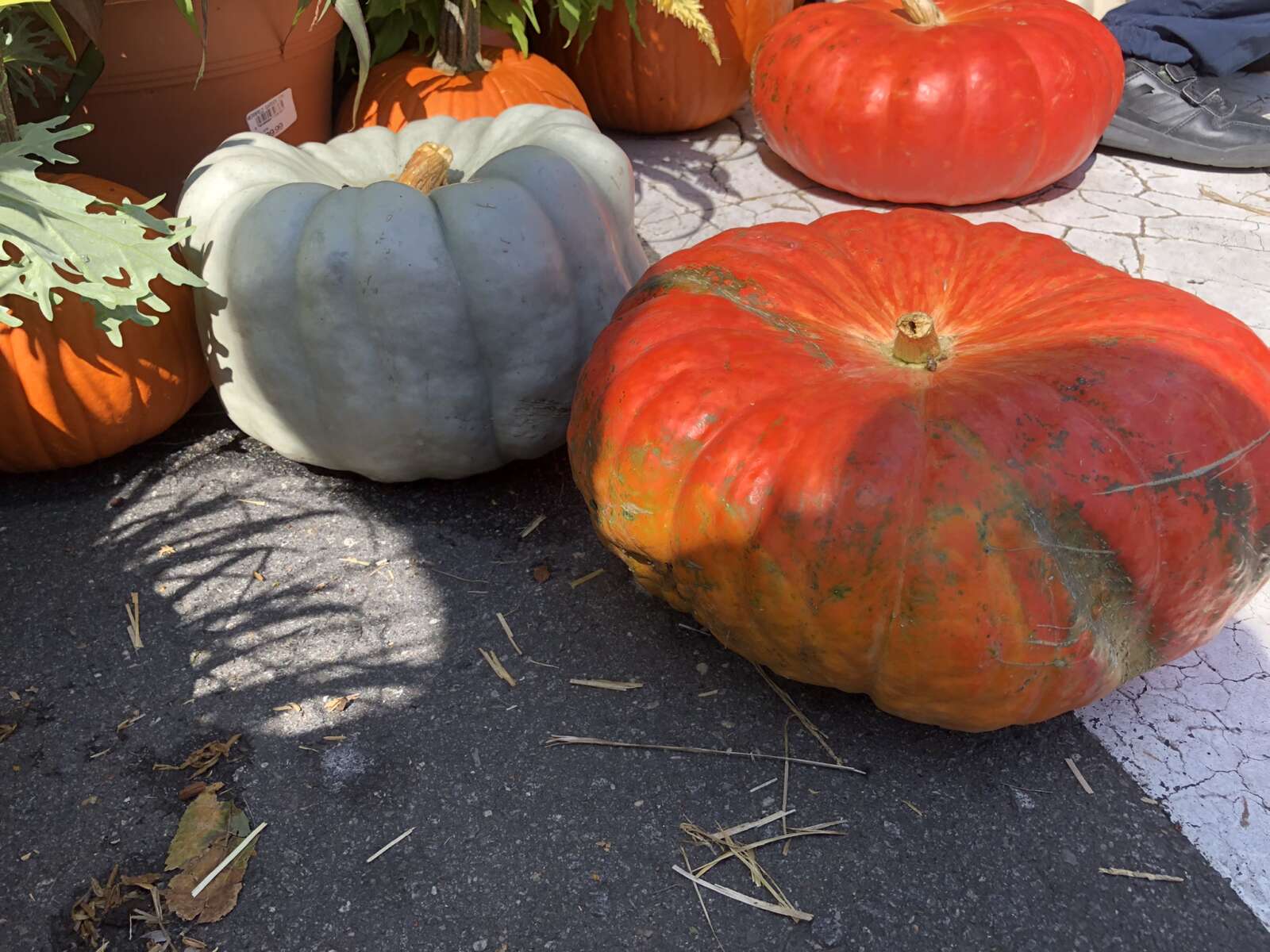
Another Halloween has come and gone, but the jack-o’-lantern that may be sitting on your stoop isn’t going to get rid of itself.
Instead of trashing the carved-up squash, the Fairfax County Department of Public Works and Environmental Services is encouraging residents to compost with its annual “PumpkinPalooza” services.
“Repurposing them in this manner is more environmentally friendly than throwing them away,” DPWES said in a press release announcing the event.
The county is accepting pumpkins for composting through Nov. 17 at its I-95 Landfill Complex (9850 Furnace Road) in Lorton and the I-66 Transfer Station (4618 West Ox Road) near Fair Lakes.
Pumpkins can be dropped off at both facilities between 7 a.m. and 5 p.m. Monday through Friday, and from 7 a.m. to 4 p.m. on Saturday and Sunday.
“All pumpkins and squash must be free of all decorations, such as paint, glitter and candle wax,” DPWES said. “Those items cannot be composted.”
The county officially introduced its compost outpost for food scraps at the I-66 disposal facility in April after a two-year pilot to demonstrate its effectiveness.
The Fairfax County Park Authority has also added composting drop-offs at all of its farmers markets, though the Wakefield and Kingstowne markets have already ended their seasons. The park authority collected nearly 37 tons of compost last year, when the service launched at five markets before expanding to all sites for 2023.
The next wastewater pump station to serve Tysons West will be able to handle 25 times as much water as its predecessor.
That added capacity will provide critical support for an area expected to add more than 10,000 new residents by the end of this decade, according to Fairfax County staff and the planning commission, which unanimously approved a plan last Wednesday (Oct. 25) to build a new station at 8608 Leesburg Pike.
“The addition to the public infrastructure must be viewed as essential,” Providence District Commissioner Phil Niedzielski-Eichner, who represents most of Tysons, said. “Without it, development in Tysons would end, and the risk of overflows and backups for the broader community will grow.”
Replacing the existing Tysons Dodge Wastewater Pump Station on the same site, the new facility will consist of an 11,200-square-foot pump station and a 2,500-square-foot generator building, county planning and public works staff told the commission.
With four pumps, including one as a backup, and a storage tank that can hold up to 12,000 gallons of diesel fuel to support the generator, the station will have the capacity for 25 million gallons of water per day — a significant boost from the 1 million gallons that the current station can process.
The facility will occupy just 1.5 acres on the 3-acre site, which includes the adjacent parcel at 8608 Leesburg Pike. Tysons Self Storage, the previous occupant, was razed after the Fairfax County Board of Supervisors bought the property for $14.1 million in 2021, according to county property records.
The remainder of the site will be left undeveloped for now, but the county intends to utilize it “for another potential public facility for the future,” according to Mohamed Ali with the Department of Planning and Development.
“This project is probably our highest priority [capital] project right now,” Department of Public Works and Environmental Services engineer Tom Grala said. “The reason for its high priority is both capacity related to Tysons development and also the time when that capacity is needed.”
He noted that the facility will be designed to limit greenhouse gas emissions, odors and its visibility from the road, including with an enclosure for the generator and evergreen vegetation along the north and south property line.
“Since there will be other facilities nearby, that’s going to be very important,” Dranesville District Commissioner John Ulfelder said of controlling emissions and noise from the generator. “I think the last thing the county needs is for people to come in and complain about what they’ve installed and what it’s doing to their quality of life.”
Niedzielski-Eichner praised the design from an aesthetic standpoint as “high quality” and “sensitive to the fact that Tysons is an evolving urban center,” but he and Braddock District Commissioner Mary Cortina questioned why the planned facility isn’t able to meet county standards for stormwater retention.
In a report, county planning staff urged DPWES to find “additional opportunities” to increase the 0.37 inches of rainfall that the facility will be able to retain on-site as currently designed to 1 inch, as required.
“I know we need [the pump station], but if DPWES can’t reach the standard in Tysons, it’s a cringe for asking everybody else to do it,” Cortina said.
Grala said the team is trying to “fine-tune its design,” but the property’s high groundwater table limits options for containing stormwater.
The new pump station is part of a larger DPWES initiative to upgrade the wastewater system in Tysons, including by installing new, larger pipes to carry water from individual properties to the station from the station to the county’s Norman J. Cole Pollution Control Plant in Lorton.
The county estimates that it’ll take until summer 2025 to finish designing all elements, and construction isn’t projected to finish until summer 2028.
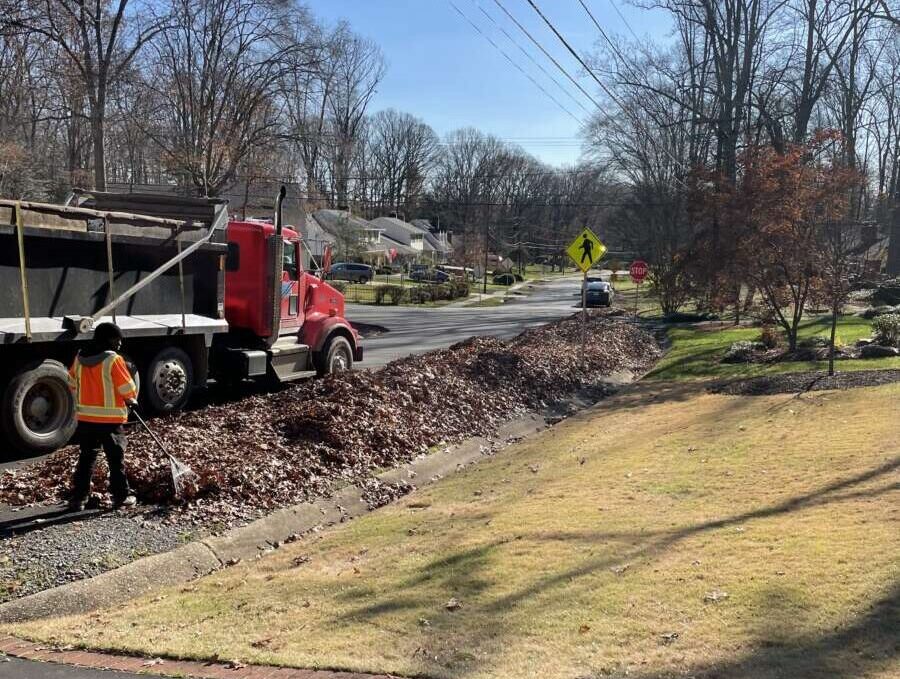
Fairfax County will continue providing fall leaf collection services at least until the 2025-2026 season, the Department of Public Works and Environmental Services announced today.
Consideration of a proposal to eliminate the service has been suspended for now. The department sought public feedback on the recommendation this summer, citing environmental concerns, rising costs and “operational issues,” including staff shortages and collection delays.
Annandale Today first reported last week that DPWES has backed off its plan, citing an email from Mason District Supervisor Penny Gross, who represents most of the approximately 25,000 residents who use the county’s leaf collection services.
DPWES staff maintain that the service may not be worth continuing long-term, but the results of this summer’s online survey convinced them that it’s not the right time to end it.
“Seasonal vacuum leaf service is not necessary to maintain healthy trees, has negative environmental impacts, detracts from the County’s core residential trash collection service, and creates public safety challenges,” DPWES said in a press release. “However, results from an online survey conducted by DPWES indicated most respondents were in favor of keeping the service and many current customers needed more information about alternative leaf management methods.”
An online petition opposing an end to leaf collections has garnered almost 1,500 signatures. In an Oct. 19 update, the petition creator credited Fairfax County Board of Supervisors Chairman Jeff McKay and other supervisors who represent the affected residents with halting the proposal.
McKay’s office confirmed to FFXnow that he had directed staff to pause the proposal at a recent meeting with them.
DPWES says it will use the next few years to conduct an outreach campaign focused on informing residents “on more environmentally-beneficial alternatives to manage leaves on-site,” such as mulching and composting. The county also collects yard waste as part of its regular trash services.
The department notes that residents can petition the county to voluntarily withdraw from the service.
This year’s vacuum leaf collection season will start as scheduled in November.
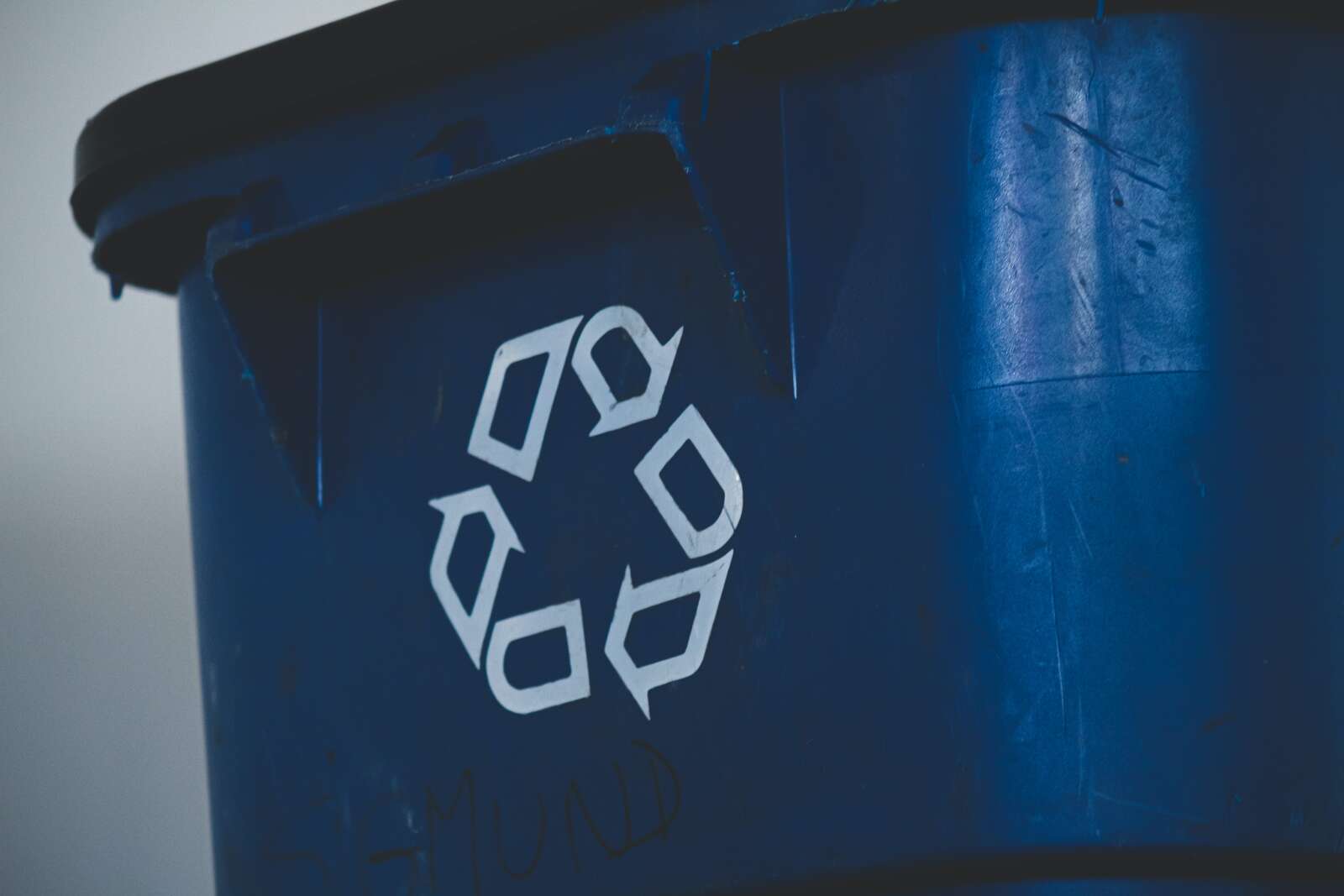
Fairfax County wants to know what trash collectors are telling residents about recycling.
In anticipation of Fairfax Recycles Day, which will fall on Nov. 15, the county’s Department of Public Works and Environmental Services is surveying residents throughout October about whether their hauler is sharing educational materials on recycling.
“The survey takes about two minutes to complete and includes inquiries such as the type of information received and how often,” DPWES said in a news release yesterday. “The goal is to receive data that will provide a clearer picture of the overall countywide recycling services of County and private collectors.”
The survey is available online and will remain open until Oct. 30. Participants will receive “a cool gift” and, if they want, a mention on the county’s website, according to DPWES.
The department developed the survey as part of a Four Touch Points (FTP) initiative, which took effect on Jan. 1 and requires trash collectors to provide information about waste reduction and recycling to their customers in order to be licensed to operate in Fairfax County.
According to DPWES, about 90% of county residents and businesses get waste collection services through private companies, which must get the certificate permitting them to operate in the county renewed every year. Participation in FTP is now being considered as part of that renewal process.
The county’s reliance on private haulers has become a challenge in recent years, as staff shortages led to service disruptions and the closure of one operator.
While county leaders have explored getting more authority from the state to manage trash pick-ups, public services have encountered staffing and operational issues as well. DPWES has proposed eliminating fall leaf collection services, starting with the 2024-2025 season.
According to the county, materials universally accepted in curbside recycling bins include plastic bottles and jugs, mixed paper and cardboard, metal food and drink cans, and paper cartons. Glass can be recycled in the purple containers that have popped up around the county and at the I-66 Transfer Station and I-95 Landfill Complex.
Photo via Sigmund/Unsplash
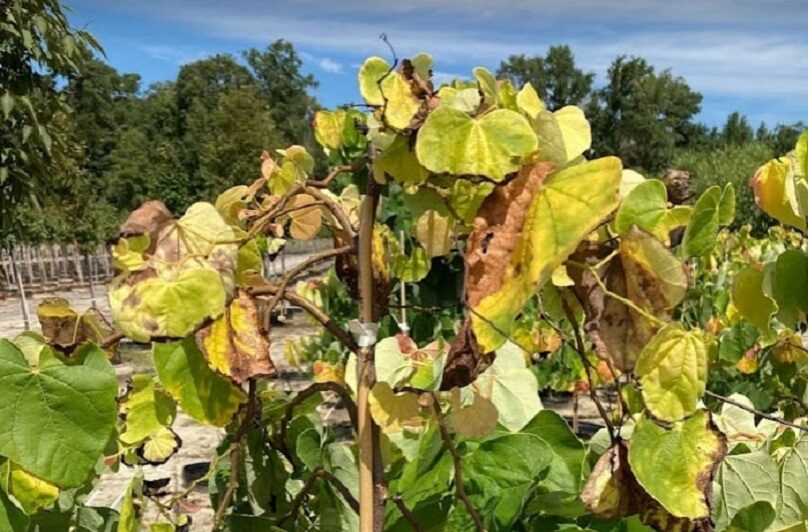
Any Fairfax County residents who recently bought a budding tree or shrub may want to keep an eye on its leaves.
A relatively new disease called vascular streak dieback is killing plants from nurseries in Virginia and five other states, the Department of Public Works and Environmental Services’ (DPWES) Urban Forest Management Division says.
“Dieback may look like yellowing or paling of the leaves’ green color (leaf chlorosis), brown or scorched leaf margins and stunting and/or wilting of current year’s growth,” DPWES said in a press release on Tuesday (Oct. 3).
In Virginia, the plants that appear to be most susceptible to the disease are maple, dogwood and redbud trees, according to Virginia Tech and the Virginia Cooperative Extension (VEC), which have cataloged 21 different affected woody ornamental plant species, as of March.
First detected in cacao in Papua New Guinea during the 1960s, vascular streak dieback was mostly confined to southeast Asia until the past couple of years. The Virginia Department of Agriculture and Consumer Services (VDACS) confirmed that the disease had emerged in the state last year.
Researchers have traced the disease to a fungus called Ceratobasidium theobromae, whose spores get carried from plant to plant by the wind, according to DPWES.
“After a spore infects a leaf, it travels into the branch and the main stem’s woody tissue, eventually killing the plant,” the department says. “Researchers continue to study VSD, and the fungus related to it, to find ways to prevent infection and the potential spread into the natural environment.”
Available data on how to prevent VSD is limited, but Virginia Tech and the VEC say it can help to minimize stress on plants by ensuring they have the right amount of soil, water and other conditions needed to stay healthy.
Here’s more from DPWES:
Virgina Cooperative Extension recommends that nurseries ensure best management practices of plant stock to prevent chances of infection. Residents looking for trees in nurseries may consider asking nursery staff about vascular streak dieback and if the internal woody tissue may safely be checked for VSD before purchasing. Also, look for any signs of scorched leaves and buds or dieback of young stems. If VSD is suspected in a recent purchase report it to the Virginia Cooperative Extension and dispose of the plant material correctly to prevent its potential spread. Plants, or the suspected live branches, also may be bagged and either taken or mailed to the Extension, where the disease can be positively identified. If mailing, a two-day delivery is best to avoid damage to live tissue.
The county’s urban forest management team has also been combatting a beech leaf disease that emerged in the area last fall and the invasive spotted lanternfly, which feeds on trees, shrubs and herbs “in unusually large numbers,” DPWES has said.
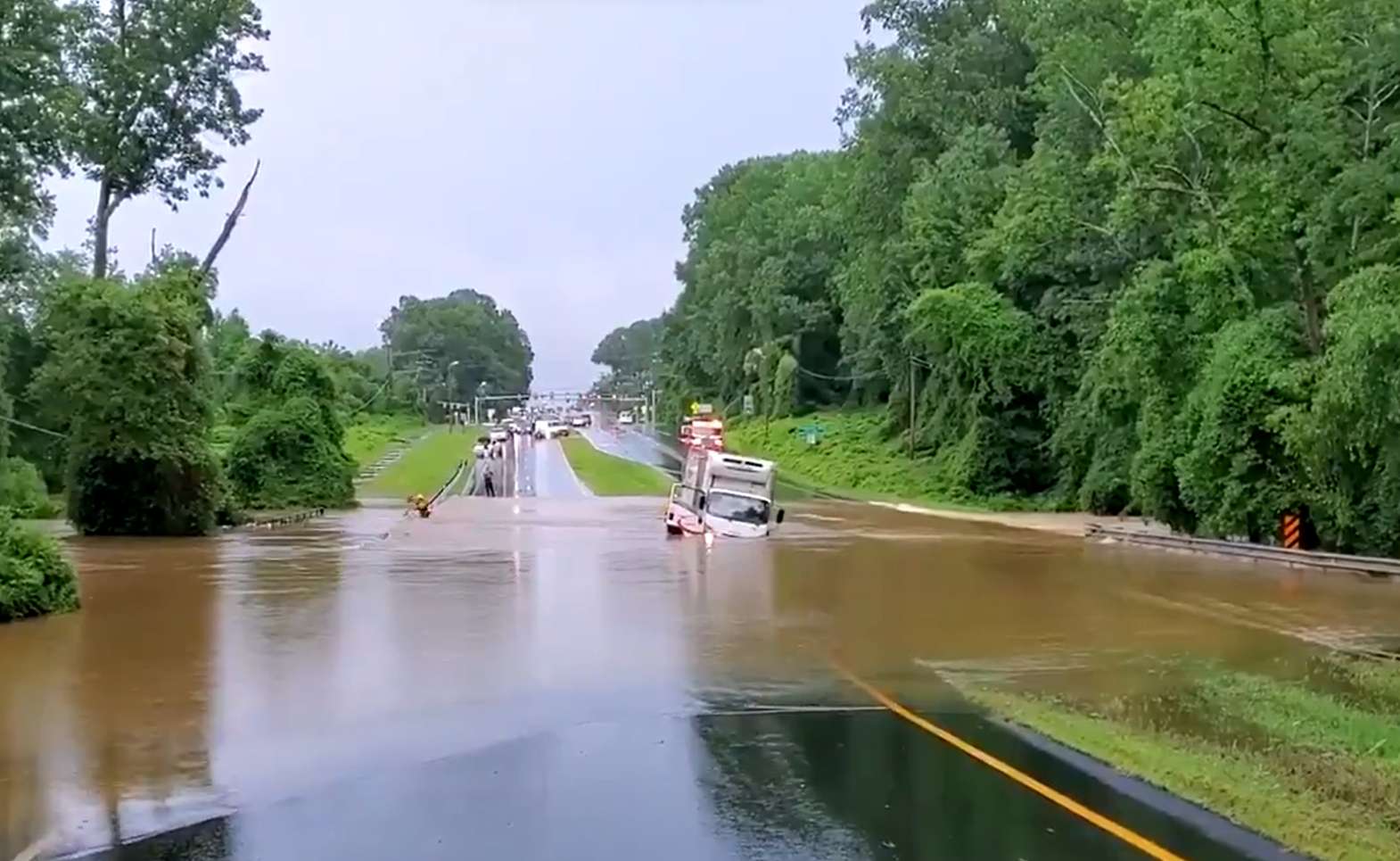
The Fairfax County Department of Public Works and Environmental Services (DPWES) has proposed a new grant program to help curb flooding in the county.
The flood mitigation assistance program (FMAP) would reimburse residents and property owners for purchasing and installing approved products and services that reduce the risk of flood damage to their property.
The program calls for a cost-sharing agreement where the resident or property owners cover 50% of the cost, and the county covers the other half up to $5,000, DPWES Deputy Director Eleanor Ku Codding told the Fairfax County Board of Supervisors at an environmental committee meeting on Tuesday (Oct. 3).
The program was made to be flexible, according to Codding. It’s open to residential or commercial multi-family properties, common-interest communities, and places of worship. Approved flood mitigation practices include:
- window wells
- flood gates
- modified basement areaways
- sump pump backup batteries
- utility protection
- exterior grading or drains
However, if an owner wanted to use another flood mitigation service not listed, it would be considered on a case-by-case basis.
Codding said, since drainage is not a straightforward issue, sharing the cost is a good solution.
“By establishing a cost-share program, we are allowing residents to be empowered to take action to mitigate that risk of flooding,” she said. “In addition, we have seen that the best flood risk reduction programs — including FEMA — include these types of cost-share programs.”
Dranesville District Supervisor John Foust supported the program but called for the county to take more action.
“We should be thinking bigger in terms of stormwater management because it’s a huge problem,” Foust said. “And once we adopt this, then we’ll be done with it. We’ll check it off and move on to the next thing, and I just think the problem deserves more.”
Codding said other programs could be brought to the board in the future.
The county has discussed raising its building stormwater standards to accommodate more frequent and extreme flooding, and earlier this year, it piloted a program for sharing the cost of projects with private property owners, essentially testing the approach proposed for the new assistance program.
Funded through the county’s Stormwater Service District taxes, FMAP would start on July 1, 2024, and applications would be reviewed on a first come, first served basis. The Northern Virginia Soil and Water Conservation District would administer the program.
DPWES will return to the board at a public hearing to get authorization to sign the memorandum of understanding with the conservation district. The agreement will establish rules for how the district should administer the program.
Screenshot via FCFRD/Twitter
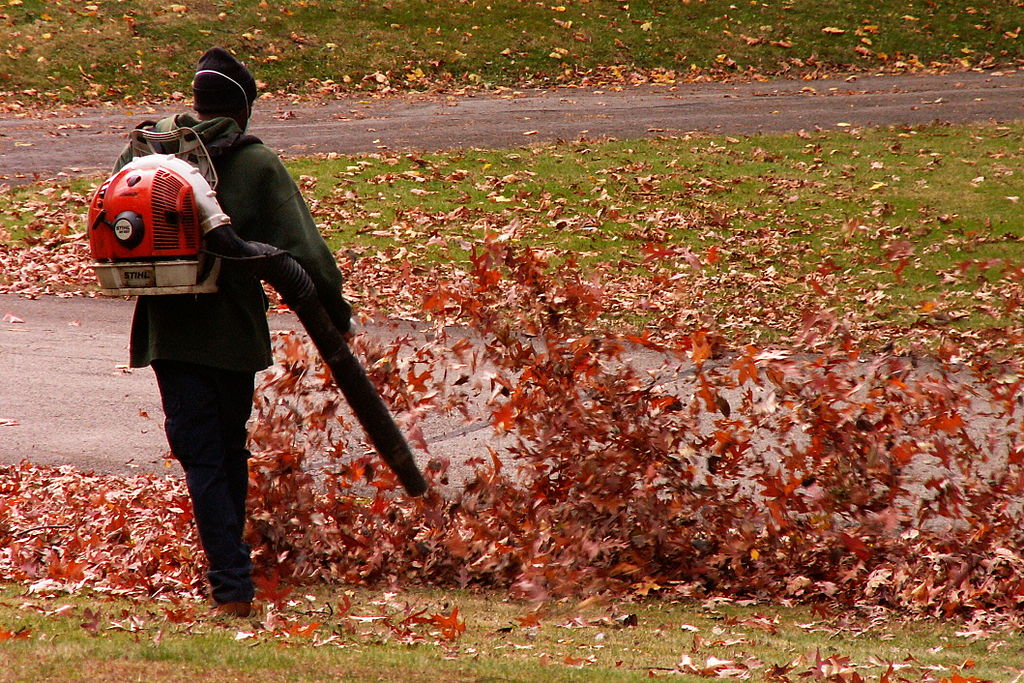
Fairfax County is steadily making progress on efforts to cut its use of gas-powered leaf blowers.
By the end of June next year — the conclusion of the 2024 fiscal year — the county plans to ensure that the supply of electric blowers and string trimmers is nearly 50% electric, according to John Silcox, a spokesperson for the Fairfax County Office of Environmental and Energy Coordination.
That means that 105 of the 217 leaf blowers owned and operated by the county will be powered by electric batteries.
“As funding allows, agencies will continue to replace aging gas models with new electric equipment,” Silcox said.
The effort is part of a countywide initiative to shift toward eco-friendly practices that reduce the county government’s carbon footprint overall.
In the fiscal year 2024 budget, for example, the county will replace 55 gas-powered leaf blowers with electric ones.
The county says transitioning to electric-powered lawn equipment will help reduce carbon emissions, noise and costs.
“Even as Fairfax County’s facilities are making the switch to battery-powered blowers and other electric equipment, we encourage residents and contractors to do the same,” Silcox said.
The effort has been underway since at least November 2021.
Photo via Cbaile19/Wikimedia Commons
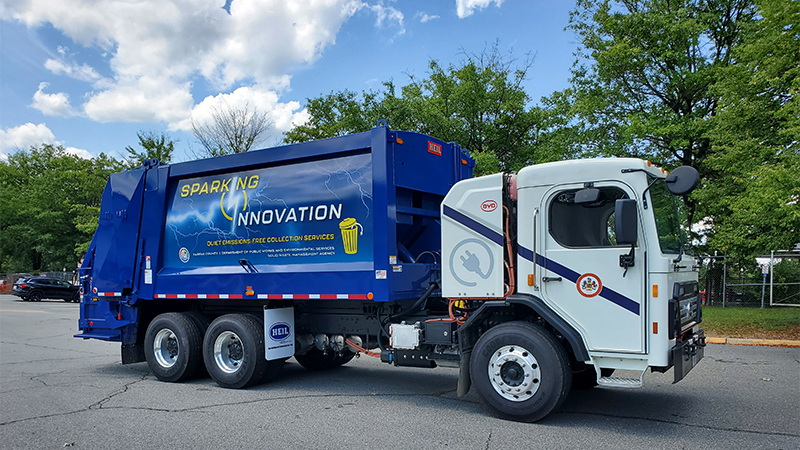
The Fairfax County Department of Public Works and Environmental Services (DPWES) is unveiling its first electric refuse trash truck today (Friday).
The truck will “pick up residential trash and yard waste on routes throughout the county,” DPWES announced. The county says the truck is “a move that will save money and protect the environment.”
The unveiling falls in line with the county’s strategy to make government operations carbon-neutral by 2040.
“Electric vehicles produce zero emissions, meaning cleaner air for Fairfax County. Electric vehicles are quieter, also reducing noise pollution. The electric truck saves residents money by requiring less overall maintenance and eliminating fuel costs,” the site reads.
The truck will join a fleet that already has 50 electric vehicles in operation, including four sedans used by DPWES. In addition, Fairfax County Public Schools has eight electric school buses.
Scott Peterson, vice chair of local environmental advocacy group Faith Alliance for Climate Solutions, called the new trash truck a positive first step.
“We hope the trial is successful and that electric trash trucks in the county, both private and county-owned, will quickly become the new normal,” Peterson said. “Heavy trucks running through our neighborhoods won’t be polluting the air we all breathe, and they’ll be so much quieter, too.”
Charging stations have been installed at the DPWES Newington Collections facility at 6901 Allen Park Road, where the county is holding the unveiling.
“When the battery has less than 20 percent of power, it will take up to five hours to recharge. Once it’s on its route, this truck can hold up to seven tons of recycling and up to 12 tons of trash,” the county says.
The trucks cost the county roughly $350,000 and are paid for by the Department’s Solid Waste Management Program and a Virginia Department of Environmental Quality grant. The county expects to have a second electric truck in September.
The unveiling is open to the public, and several county lawmakers are scheduled to speak. The event starts at 11 am.
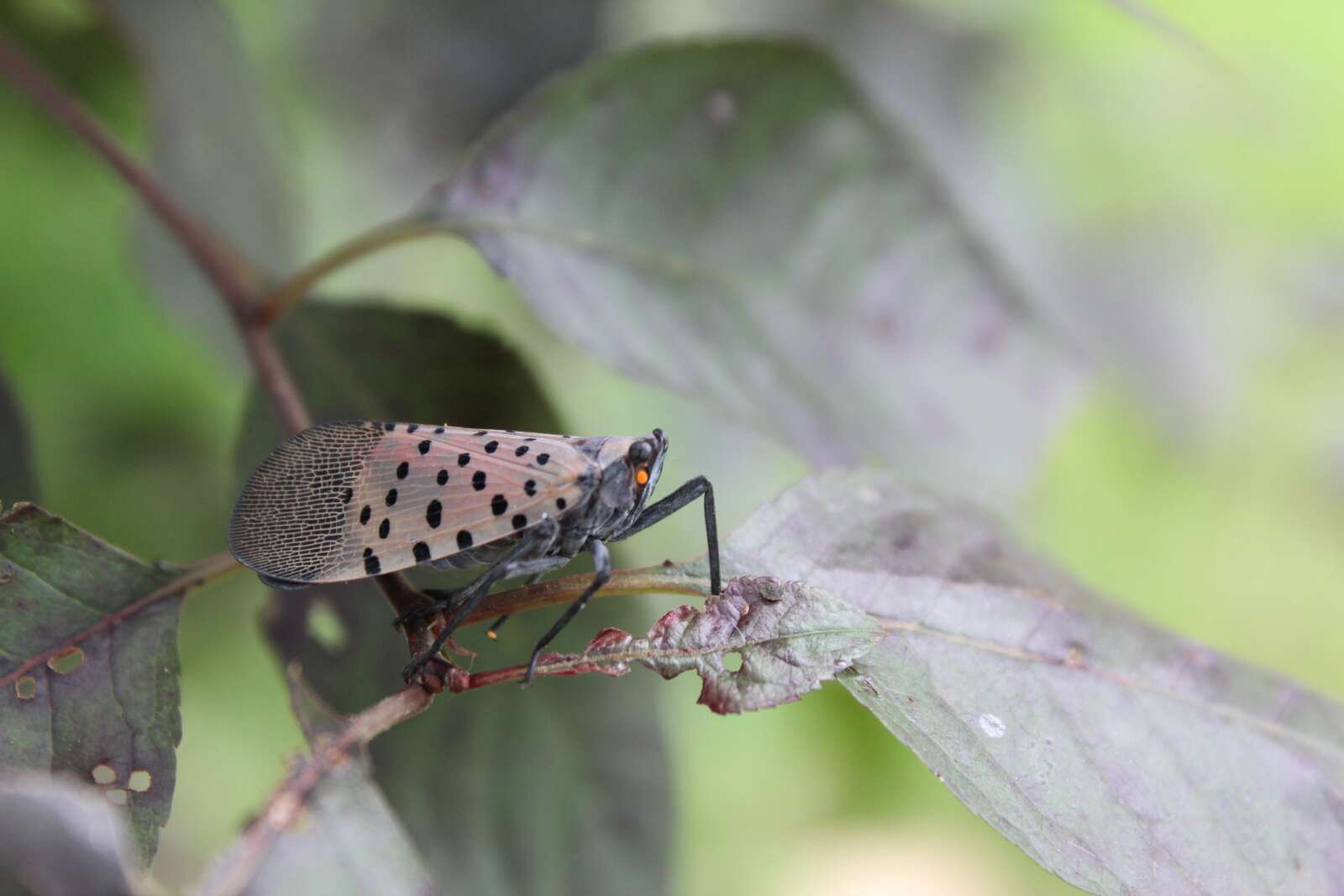
More reports of the spotted lanternfly are popping up throughout Fairfax County, according to local officials.
The invasive insect — which is native to China, India and Vietman — has been seen in more areas of the county, the Fairfax County Department of Public Works and Environmental Services says.
Officials are asking the public to help kill the pest. So far, the Maryland Department of Agriculture has been working closely with the county to determine how to reduce its numbers.
After first arriving in a grocery store shipment to Annandale, the bugs have primarily proliferated in the western area of the county, including Herndon, Centreville and Chantilly. Infestations have also been reported in Burke and Dunn Loring, according to a DPWES graphic.
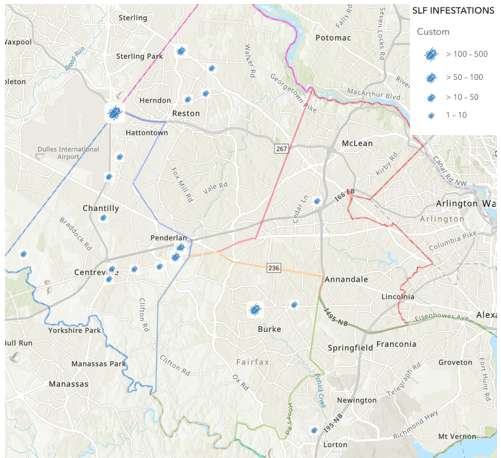
The insects feasts on more than 70 plant species, particularly the invasive tree-of-heaven, and is particularly problematic for Virginia, where they’re threatening the peach, apple, grape and wine industries, DPWES says.
“Spotted lanternfly has the potential to cause severe nuisance to residents by feeding on trees, shrubs and herbaceous plants in unusually large numbers and leaving a sticky, smelly mess when they leave,” DPWES said. “While plant mortality is not a widespread concern, the nuisance created by these insects could cause some reactionary behaviors, leading to unnecessary pesticide use and the potential removal of valuable tree canopy and other vegetation.”
Egg masses are common in September and throughout the first few hard frosts. Vehicles help spread the pest around, particularly those near trees or the edges of a forest.
Here’s more from DPWES on how to help:
If you find spotted lanternfly, please report your findings through the mobile app iNaturalist or call 703-324-5304.
You can also report your findings by email at ReportSLF@fairfaxcounty.gov. Provide photos and an address with your report.
After careful identification, trap or kill the insect, and scrape and smash the egg mass.
Check your vehicles, trailers and mobile equipment (tractors, bobcats, etc.) before visiting other locations.
Photo via Magi Kern/Unsplash

